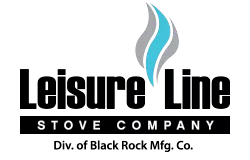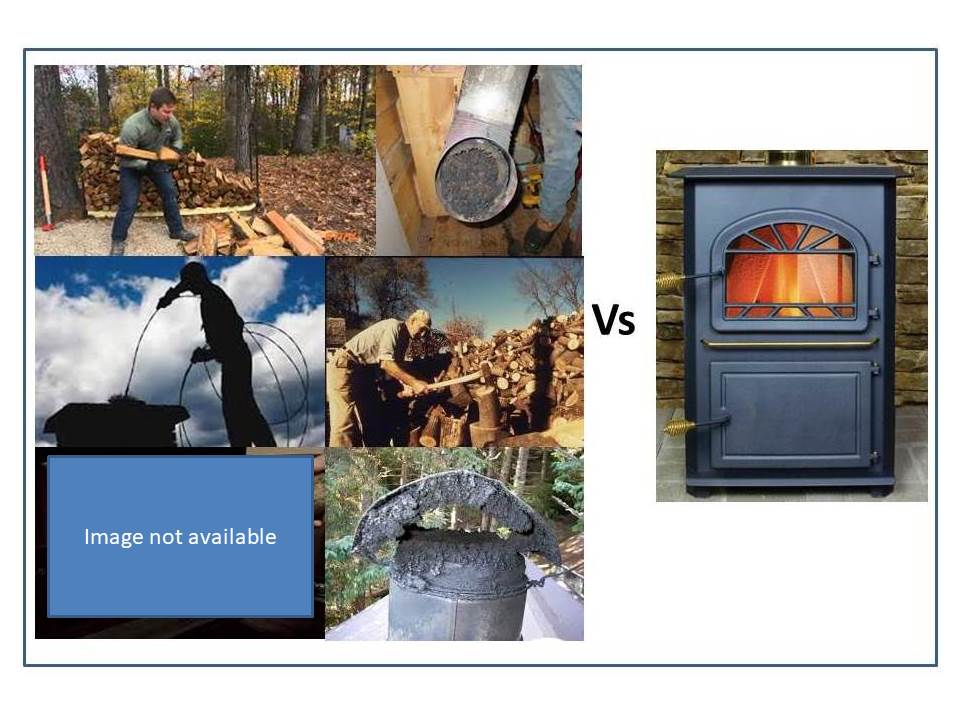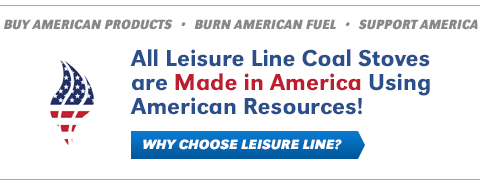Energy costs in the United States have skyrocketed in the past months. This causes many home owners to look for cheaper, alternative methods for keeping their homes warm and cozy. Solid fuels such as wood pellets, cord wood and anthracite coal, are all viable, lower cost alternatives to electricity, oil and propane. Statistics show that almost two million households in the United States still use either coal or wood for heating.
However for many, the jury is still out on whether coal-burning delivers more advantages than wood-burning. While both wood and coal burning appliances come with their own unique perks, one must be more practical and efficient than the other – right? Here, we answer the question on many homeowners’ minds: “Why should I choose coal over wood for burning?” Read on to learn more about the benefits of anthracite coal as the best, easiest to use, and lowest cost alternative for heating your home. Also check out our blog post for a discussion on hand fired, Vs Stoker anthracite burning appliances.
AnthraciteBurns Longer and Hotter Than Other Fuel Sources
The hottest wood fire is produced by red oak at around 1600 degrees Fahrenheit. Soft woods such as pine burn at a much lower temperature, less than 1,000 degrees Fahrenheit. Anthracite coal burns at above 2,500 degrees Fahrenheit and can burn as hot as 3,500 degrees depending on combustion air flow. Wood burning units typically depend on natural draft for combustion whereas anthracite burning stoker units utilize forced combustion air by means of a fan. This adds to the efficiency and temperature of the heat produced.
Coal is an energy dense fuel, meaning it burns efficiently, and produces more heat per ton. It also means a coal burning appliance is capable of producing 2x more BTU/hr. than a wood burning appliance. Essentially you can burn less coal for longer, giving you more bang for your buck. It takes an equivalent cord and one half to equal one ton of coal which contains 26,000,000 BTUs of heating energy. Wood pellets are less energy dense and contain approximately 7,000 BTUs per pound or 14,000,000 BTUs per Ton. Cord Wood (red oak) at 20% moisture content, has an energy value of 6,388 BTUs per pound resulting in 12,766,000 BTUs per ton. Calculating the energy value of a cord of wood is complex since the moisture content will have a large effect on the weight. Typically speaking a cord of wood can weigh in excess of two tons.
An anthracite burning coal stoker boiler, furnace or stove will typically burn for at least one day without requiring any attention. This time can be several days depending on the outside temperature, often resulting in burn times in excess of 32 hours in spring and fall.
AnthraciteIs More Convenient to Store
Using wood for heating means needing considerably ample space, out of the weather to store cord wood or wood pellets. Most households will consume an average of six cords of wood per year, which translates to 768 cubic feet or 28.5 cubic yards of room area. Coal users typically finish only three tons of coal, equal to approximately 120 cubic feet or 4.5 cubic yards – around 75% less space than wood usurps. Wood is also prone to insect infestation and rotting, especially when stored in a moist or humid area. Coal is waterproof and not susceptible to bugs – ideal for outdoor bins, garage spaces, or basements.
Also storage of coal is not affected by moisture whereas wood pellets will be ruined if subjected to moisture and cord wood will not burn as well or produce as much heat. Sources of sawdust for wood pellets have been depleted by the reduction in US furniture manufacturing and other sawdust producing indstries, therefore trees are being cut down to make wood pellets. Sources for cord wood and pellets are increasing in cost and scarcity as they are competing with the lumber market. This translates to bigger purchases of wood pellets (at roughly twice the storage space for the same energy value in coal) to ensure that a customer does not run out during the course of the winter. This combined with the extra space required equals more headaches for burning wood or wood pellets.
Anthracite Is A Cleaner And Safer Burning Option
Despite the negative press that bituminous coal receives regarding its environmental impact, anthracite coal is safer for the environment. Anthracite coal has the lowest sulfur content emission when compared to bituminous coal and other fossil fuels. It is also known as “hard coal” – as opposed to the Bituminous coal which is called “soft coal”. Anthracite aslo generates the most heat out of all fossil fuels, when compared pound for pound. Anthracite coal produces no smoke or particulate emissions and is exempt from EPA regulation, whereas pellet and wood stoves are regulated by the EPA due to their emissions.
Anthracite is safer because it creates no residual creosote build-up. Wood and pellet stoves were responsible for almost 25,000 chimney fires in the US in 2021 alone. There has never been a chimney fire caused by an anthracite burning appliance. Also the chimney connected to an anthracite burning appliance requires brushing only every 5 to 10 years instead of every year as is required for chimneys connected to wood burning
appliances. While the chimney requires only occasional cleaning the flue pipe connected to an anthracite burning appliance must be cleaned every spring and sometimes more often depending on coal usage.
Anthracite Is Easier To Use And Low-Maintenance
Aside from coalAnthracite being a more energy dense heat source, it is also easy to load and use. For wood to function well, it must be air-dried and not have more than 20% moisture. High-quality wood would usually takes up to six months or longer to lose most of its water content and be ready for burning. Moreover, wood is cheaper if purchased in bulk four-foot lengths or longer, but then you need to chop, stack, and season the wood yourself.
Like wood, anthracite is cheaper when purchased in bulk, however it can also be purchased in 40 pound bags. Bulk coal is typically 10 to 20% cheaper than bagged coal, but due to its high energy density several years worth of energy can be stored in your basement. Also anthracite is waterproof and has little moisture, which means that you could load it straight out of a sack to your coal stove, boiler or furnace. Even if it is wet, you need merely drain off any excess water and load it directly into the stove. Leisure Line stokers feature stainless steel hoppers which are not bothered by the extra moisture.
Overall, Anthracite burning appliances are low maintenance and require only end of season maintenance. Stoves and furnaces manufactured by Leisure Line feature the Coal-Trol system which truly is “cruise control” for your stove. Simply set the desire temperature and then load coal and take out the ashes as needed. No huge temperature swings as are prevalent with wood fired stoves, just even consistent heat that warms your home in a way that has to be experienced to be believed.
Anthracite Is A More Reliable Heat Source
Anthracite coal is the only fossil fuel not traded on the futures market, therefore it’s pricing does not change rapidly. From 1949 to 2011 Anthracite purchased at point of origin went from $8.90 a short ton to $70.90 a short ton, that increase came in small incremental steps. While mining uses a large volume of diesel fuel, the cost of anthracite does not increase unless there is a dramatic increase in diesel cost. For example diesel has doubled in cost in the past 8 months while anthracite has increased less than 20%. There is another 200 to 600 years of anthracite available to mine, and current mining practices are based on land reclamation rather than leaving a scarred landscape. All coal mining areas are returned to pre-existing conditions and when complete and native vegetation including trees are planted. In short it is the responsible and reliable choice.
Wood pellets and cord wood are subject to shortages which may drastically affect the price. Wood pellets currently averages $250 per ton, but just in the past two years that price has changed up to $100 per ton. The average cost for a cord of wood in 2019 was $296 with some prices as high as $500 a cord for seasoned and split wood. In 2022 prices were a bit lower but there is a shortage forecast due to the period of colder than normal weather and other factors. The availability of commercially sold firewood is dependent on other industries such as lumber competing for available wood lots. Additionally disease and insect infestations affect the distance that the wood can be moved so as to contain any issues. This factor causes the cost to vary by up to 200% when comparing state to state. Of course there is one big benefit to burning wood, in that if you have access to a wood lot you can cut it yourself. On the other hand considering your time, cost of equipment, transportation and fuel it is far from free..
A Few Things To Remember When Burning Anthracite
Coal is an excellent option for homeowners looking for more convenient heating sources. Still, it comes with a few disadvantages, but they are easily manageable with proper knowledge and preparation. Coal ignites at a temperature more than 100 degrees higher than wood, and it requires a slightly different process to get it lit. Coal may also corrode steel chimneys and metal surfaces. It’s best to clean out your stove, boiler or furnace thoroughly immediately after shut down in spring. It is also advisable to utilize stainless steel for all venting of flue gas.
Anthracite coal produces more ash than wood, however anthracite coal ashes are healthy for vegetables and other plants that favor an acidic soil (such as tomatoes!). While emptying the ash pan will be required every one to three days, the ash is easily disposed of and makes an excellent antiskid for winter ice. You can opt to keep the ashes in sealed plastic (must be allowed to cool before placing in plastic) or metal bins and save them for future home renovation projects, such as sprinkling them on slippery pathways or using them to cover potholes on your driveway or walk ways.
Lastly, you are not allowed to throw any materials other than anthracite into your coal stove, boiler or furnace. Doing so may melt the item and make them stick to the ashes. This can block the airflow and decrease the efficiency of your furnace or stove or cause a dangerous condition resulting in personal injury.
Wrapping Up
Anthracite-burning, like anything you have never done before requires proper education. Leisure Line offers many resources in the Owners link on our website. Anthracite ignite less quickly than wood. But, with a few attempts and practices, you will soon to easily light your coal stove or furnace without a hitch. The key is to improve your knowledge about anthracite and never underestimate the power of experience and preparation. In conclusion both wood and anthracite burning for heating your home have benefits and disadvantages. Review this blog and then ask yourself “which one is better for my needs and wants?”. We encourage you to research both before deciding.
Anthracite coal is hotter, cleaner, cheaper, safer, and easier than wood or wood pellets. If you are ready to purchase an anthracite coal stoker stove, coal stoker boiler, or coal stoker furnace, or just have questions, our Leisure Line Stove Company team can help you! We are an American manufacturing company specializing in assisting clients in making their homes cozier for less money. We are in the people business first and foremost, and that is why we value quality, efficiency, and simplicity above all! Call us at 570-752-1811 for inquiries.



